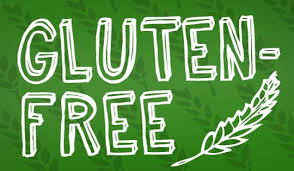As of Tuesday, foods on grocery store shelves carrying the “gluten-free” label must meet stringent Food and Drug Administration requirements, following through on a plan introduced one year ago that promised to regulate the claim.
The FDA introduced gluten-free labeling guidelines last year and published the final rule in August, 2013., giving retailers a year to come into compliance. The label ensures that gluten proteins –naturally found in wheat, rye, barley and cross-bred hybrids of these grains – are only present in foods at certain levels.
“FDA’s new regulation for gluten-free food labeling standardizes what ‘gluten-free’ means on the food label,” the agency announced Tuesday. “FDA has set a gluten limit of less than 20 parts per million for foods that carry the label ‘gluten-free,’ ‘no gluten,’ ‘free of gluten,’ or ‘without gluten.'”
For many people, going “gluten-free” is just one more option in the ever-growing list of fad diets and health crazes. But for people with celiac disease, avoiding gluten means the difference between health and sickness.
Eating gluten — a protein found in a number of grains including rye, wheat and barley that gives dough its elasticity — can cause symptoms ranging from abdominal pain and diarrhea to rashes and fatigue in celiac sufferers.
Requiring manufacturers to label all products that contain significant amounts of gluten will help people with celiac disease differentiate among the wide range of food choices on the market, and the FDA hopes the new labeling requirements will reduce the incidence of negative reactions and sickness caused by inadvertent gluten consumption by people with celiac disease.
For many years, only celiac sufferers tended to even be aware of what gluten is, and many of them were undiagnosed due to low awareness of the disease. More than 3 million Americans abstain from gluten today, but Daniel Leffler, director of Research at the Celiac Center at Beth Israel Deaconess Medical Center Boston, says that only 10 percent of them are actually diagnosed celiacs.
Agencies/Canadajournal
 Canada Journal – News of the World Articles and videos to bring you the biggest Canadian news stories from across the country every day
Canada Journal – News of the World Articles and videos to bring you the biggest Canadian news stories from across the country every day



